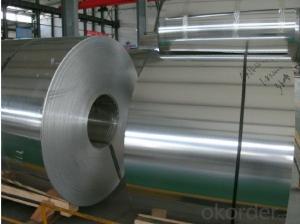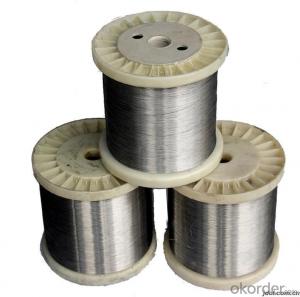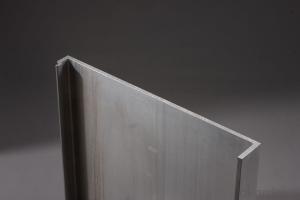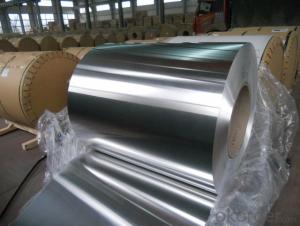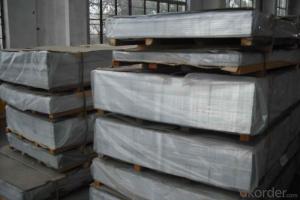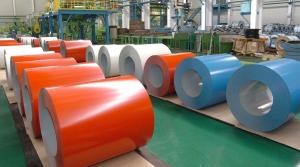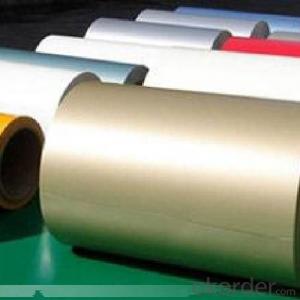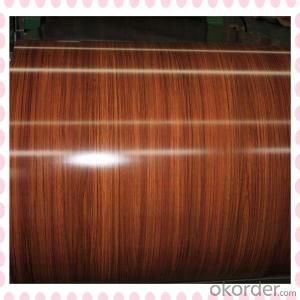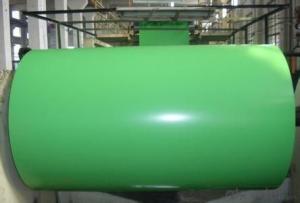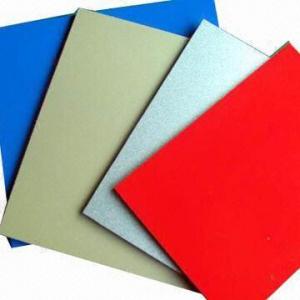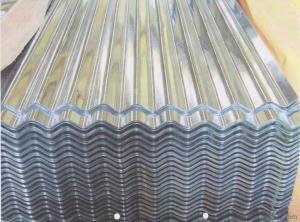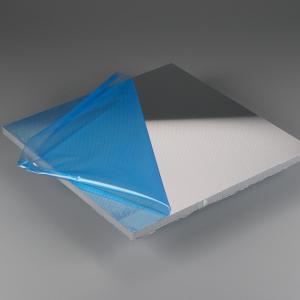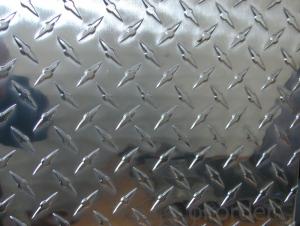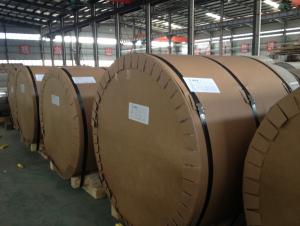500 Ct Aluminum Foil Sheets - CC Aluminium Coils for Prepainted Decoration
- Loading Port:
- Shanghai
- Payment Terms:
- TT OR LC
- Min Order Qty:
- 5 m.t.
- Supply Capability:
- 20000 m.t./month
OKorder Service Pledge
OKorder Financial Service
You Might Also Like
Specification
1.Structure of CC Aluminium Coils for Prepainted Decoration
CC Aluminium Coils for Prepainted Decoration is one semi-finished aluminium material. This strip can be rolled down to aluminium coil,sheet,circle ect. The alloy AA1050 is widly used in building, industry ect. Its weight is much lower than steel. So many customers choosed aluminium material instead of steel.
2. Main features of CC Aluminium Coils for Prepainted Decoration
a.Competitive price---We have our own mills and can produce mill finished aluminium coils, so we can control the production cost better.
b.Professional after-sale service---We have more than 15 years exportation experience and you need not worry about the exporation problems.
c.Fast delivery time---We can control the delivery time within 35 days.
3. Image
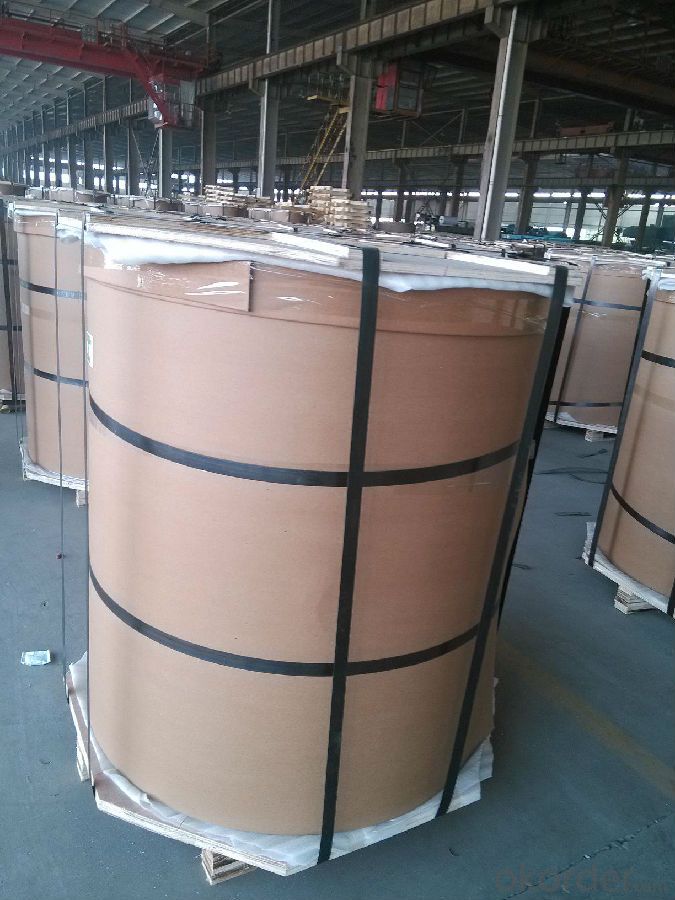
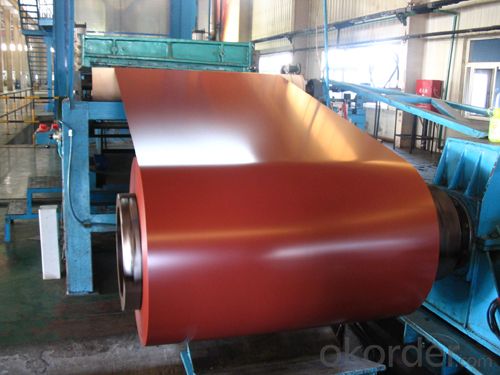
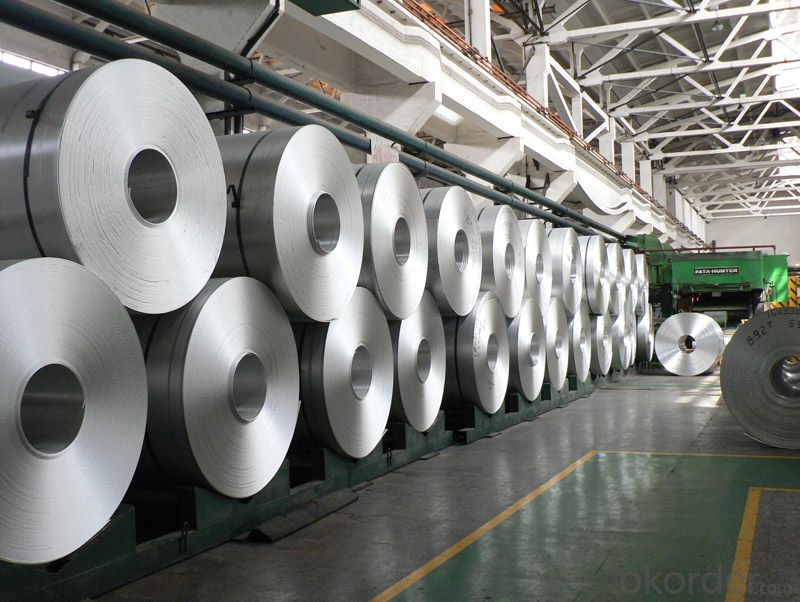
4. Product Specification
| Alloy | Temper | Thickness | Width | Weight |
| AA1050 | HO-H24 | 0.2MM-3MM | 1000MM-1500MM | About 2.5 tons |
5.FAQ:
What is the quality standard?
---Usually our standard is GB3880-2006
What is the largest width?
---It is 2300mm
What is the MOQ?
---Usually we can accept 80 tons.
- Q: I have been doing this science prac at school and I have received some strange results. I measured the density of this metal, which leads me to believe it is Aluminium. Also, its silvery appearance supports this. When I have attempted to react it with Hydrochloric Acid, Sulfuric Acid and the nitrates/chlorides of a few metals, I have received some odd results.Despite having a high reactivity, the only substance it has reacted with so far out of all of the above is Tin Chloride. Am I doing something wrong? Is it possible that it isn't aluminium and rather a similar metal such as zinc? Thanks in advance :)
- Aluminum is very reactive so what happens is that it has a coat aluminum oxide as soon as it comes in contact with oxygen the outer layer forms aluminum oxide Al2O3. That is why Aluminum does not rust. The Al203 coat protects it.
- Q: Are aluminum sheets corrosion-resistant?
- Yes, aluminum sheets are corrosion-resistant. Aluminum has a natural oxide layer that forms on its surface, which acts as a protective barrier against corrosion. This oxide layer is highly stable and prevents further oxidation from occurring. Additionally, aluminum is non-reactive to many common corrosive substances such as saltwater, acids, and alkalis. However, in certain environments or under specific conditions, aluminum may still be prone to corrosion. For example, in highly acidic or alkaline environments, aluminum may corrode at a faster rate. Therefore, it is important to consider the specific application and environment when using aluminum sheets to ensure optimal corrosion resistance.
- Q: What are the typical thickness options for aluminum sheets?
- Depending on the specific application and industry requirements, the thickness options for aluminum sheets vary. However, a range of thicknesses is commonly available for aluminum sheets. Some of the most frequently used thickness options include 0.025 inches (0.635 mm), 0.032 inches (0.81 mm), 0.040 inches (1.02 mm), 0.050 inches (1.27 mm), 0.063 inches (1.6 mm), 0.080 inches (2.03 mm), and 0.125 inches (3.18 mm). These thicknesses are widely utilized in industries such as aerospace, automotive, construction, and manufacturing. It's important to note that specialty aluminum sheets may offer even thicker options, tailored to the specific requirements of a given project.
- Q: How do aluminum sheets perform in terms of sound insulation?
- Aluminum sheets are not well-known for their sound insulation properties. Due to their relatively low density and thinness, aluminum sheets do not provide substantial soundproofing capabilities. They are more commonly used in applications where their lightweight nature, corrosion resistance, and thermal conductivity are desired, rather than for their sound insulation properties. For effective sound insulation, other materials such as rubber, foam, or fiberglass are often preferred.
- Q: Can the export quality of China's aluminum plate meet the requirement of ASTM B 209? Is this requirement for our country? Master the exhibitions, O (a _ U) O thank you
- ASTM B209 standards for aluminum materials developed by us Materials LaboratoryThe corresponding domestic standards for GB/T 3880, but 3880 standards in many places and B209 there are many differences, some domestic manufacturers can be produced in accordance with B209.
- Q: How does aluminum sheet compare to other metals in terms of weight?
- Aluminum sheet is exceptionally lightweight compared to most other metals. It has a lower density, making it a popular choice for applications where weight reduction is a priority.
- Q: Are the aluminum sheets suitable for manufacturing sporting equipment?
- Yes, aluminum sheets are suitable for manufacturing sporting equipment. Aluminum is a lightweight and durable material that offers numerous advantages for the production of sporting equipment. Its inherent strength-to-weight ratio makes it ideal for applications that require strength while keeping the overall weight down. Additionally, aluminum is highly corrosion-resistant, which is crucial for sporting equipment that is exposed to various weather conditions. Furthermore, aluminum can be easily formed into different shapes and sizes, allowing manufacturers to create customized equipment for different sports. Overall, the use of aluminum sheets in the manufacturing of sporting equipment ensures the production of high-quality, lightweight, and durable products that enhance performance and durability.
- Q: Are aluminum sheets prone to warping?
- Under certain conditions, aluminum sheets may be susceptible to warping. Unlike steel, aluminum is a relatively soft metal, making it more prone to bending or distorting. However, the extent of warping in aluminum sheets depends on various factors, including sheet thickness, alloy composition, temperature exposure, and applied stress levels. Thinner aluminum sheets have less structural integrity, making them more prone to warping. Conversely, thicker sheets are more resistant to warping due to their increased rigidity. The specific alloy composition of the aluminum sheet also affects its susceptibility to warping. Warping can occur due to temperature fluctuations. High temperatures cause aluminum to expand, and without proper support, it may bend or warp. Similarly, rapid cooling causes contraction, leading to warping. The level of stress applied to aluminum sheets can contribute to warping. Excessive bending, pressure, or unevenly distributed loads can deform the sheet. To minimize warping, it is crucial to handle aluminum sheets carefully, provide adequate support during temperature changes, and avoid applying excessive stress. Additionally, using thicker sheets or selecting alloys with higher tensile strength helps reduce the risk of warping.
- Q: Are aluminum sheets suitable for HVAC applications?
- Yes, aluminum sheets are suitable for HVAC applications. Aluminum is a lightweight, durable, and corrosion-resistant material, making it ideal for use in heating, ventilation, and air conditioning systems. It offers excellent thermal conductivity, allowing for efficient heat transfer, and can be easily formed and fabricated to meet specific requirements in HVAC installations. Additionally, aluminum is also environmentally friendly as it can be recycled, making it a sustainable choice for HVAC applications.
- Q: Are the aluminum sheets suitable for manufacturing architectural column covers?
- Yes, aluminum sheets are suitable for manufacturing architectural column covers. Aluminum is a lightweight yet durable material that offers excellent corrosion resistance, making it ideal for exterior applications such as column covers. It can be easily shaped, bent, and fabricated to create custom designs and sizes, allowing for versatility in architectural projects. Additionally, aluminum sheets can be finished with various coatings, such as powder coating or anodizing, to enhance their aesthetic appeal and provide additional protection against weathering and wear. Overall, aluminum sheets provide a great combination of strength, versatility, and aesthetics, making them a suitable choice for manufacturing architectural column covers.
Send your message to us
500 Ct Aluminum Foil Sheets - CC Aluminium Coils for Prepainted Decoration
- Loading Port:
- Shanghai
- Payment Terms:
- TT OR LC
- Min Order Qty:
- 5 m.t.
- Supply Capability:
- 20000 m.t./month
OKorder Service Pledge
OKorder Financial Service
Similar products
Hot products
Hot Searches
Related keywords
